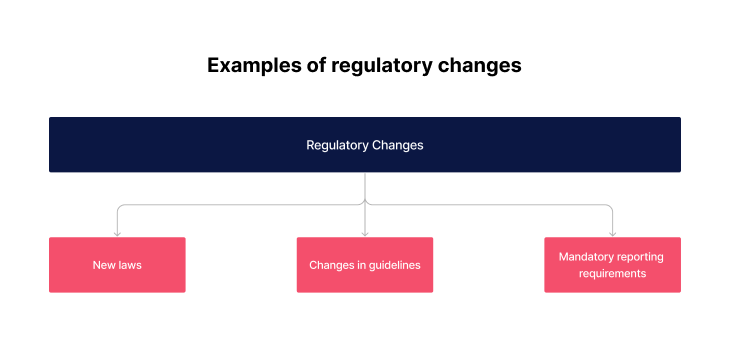For education and learning and development managers in healthcare, the continuous evolution of regulations presents both challenges and opportunities. It is crucial to stay abreast of these changes to ensure that healthcare training aligns with the latest legal requirements and best practices, thereby maintaining the highest standards of patient care.
What Are Regulatory Changes?
Regulatory changes in healthcare are adjustments or new introductions to policies, guidelines, and laws that dictate the standards for healthcare delivery and education. These can be broad, affecting all healthcare professionals, or specific to certain specialties. These changes are often in response to technological innovations, public health concerns, or emerging medical research.
These changes are often in response to regulatory reform, recommendations outlined in the final report of a royal commission, technological innovations, public health concerns, or emerging medical research.
Why Is It Important To Be Aware of Regulatory Changes in Healthcare?
A keen awareness of regulatory changes is crucial for several reasons. It ensures compliance, reducing legal risks for healthcare providers and preventing potential fines. Moreover, it directly impacts patient safety and the quality of care. By keeping current, learning and development managers can adapt care worker training programs swiftly, ensuring that all healthcare professionals are well-prepared to meet these new standards.
Impact of Regulatory Changes on Healthcare and Training
When regulations change, the effects on healthcare training can be widespread:
| Regulatory Change | Implications for Training |
|---|---|
| Introduction of new privacy laws | Revised training modules on patient confidentiality and data handling. |
| Changes in clinical practice guidelines | Updated clinical skills training to incorporate best practices. |
| New mandatory reporting requirements | Training on documentation and reporting procedures for healthcare professionals. |
Want a healthcare LMS that can support changes in Australian healthcare regulation?
Contact Ausmed today and see how we can support your organisation!
Examples of Regulatory Changes in Healthcare Training

Examples include the incorporation of the latest Basic Life Support (BLS) guidelines into training programs, which is mandatory for clinical staff. Similarly, changes to regulations regarding the administration of controlled substances necessitate updated training for pharmacists and nurses to ensure strict compliance with new storage and prescription protocols.
How to Keep Up with Regulatory Changes
Effective strategies for keeping up with regulatory changes include:
- Conducting reviews - Establishing regular reviews of official healthcare regulatory websites and updates from healthcare law resources.
- Memberships - Maintaining memberships with professional healthcare bodies and associations that provide updates on changes in the sector.
- Feedback loops - Implementing a feedback loop with front-line healthcare professionals who can offer insights into the practical aspects of regulatory changes.
- Collaboration - Collaborating with legal experts to interpret complex regulations into actionable training content.
Responding to Regulatory Changes in Training
The response to regulatory changes should be strategic and systematic:
- Quickly update or develop new training materials in line with the latest regulations, using a variety of formats to cater to different learning styles.
- Engage in scenario-based training to provide real-world context to the regulatory changes.
- Utilise the capabilities of a learning management system (LMS) for efficient rollout and tracking of compliance training.
- Offer certification and re-certification courses to ensure that all staff members' qualifications remain current with regulatory standards.
Embracing these changes as opportunities for continuous improvement ensures that the healthcare workforce remains competent and provides quality care services.
Related Resources
- Guide to Mandatory Training
- LMS in Healthcare: The Roles, Benefits and Pros and Cons
- What Are Learning Analytics?
- Policy Management: A Guide for Healthcare Managers
- Training Requirement: Policies and Procedures
Conclusion
Regulatory changes in healthcare are inevitable and serve as a catalyst for continuous improvement in training and patient care. For learning and development managers, staying informed and responsive to these changes is not optional but a critical component of their role. By proactively adapting training programs, they ensure that healthcare professionals are not just compliant, but are also equipped with the latest knowledge and skills to deliver excellent care.



